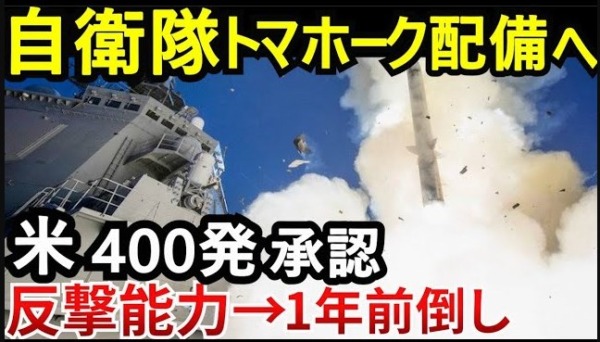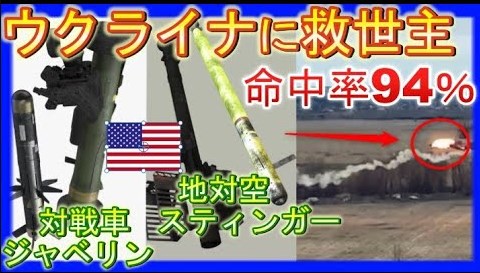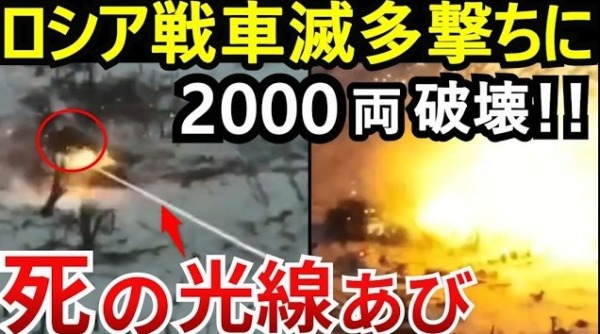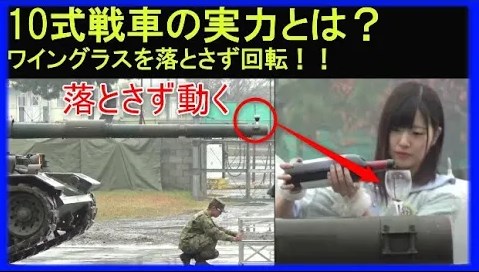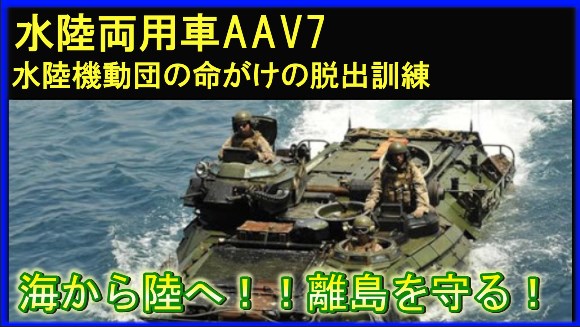
Amazonのオーディオブック12万タイトルの本を好きなだけお楽しみいただけます。・本の1冊分の月額で聴き放題
・料金をメリットが上回る
・いつでも読書できる
・読書量が格段に増え、積読が解消される
・長時間の読書も目が疲れない
・聴くたびに学びを感じる

This article is available in English.
Please scroll below the Japanese article to see the English version.
陸上自衛隊に配備されている水陸両用車AAV7(セブン)。
AAVとは「Amphibious Assault Vehicle」(アンフィビアス・アサルト・ビークル)の略であり、水陸両用車という名の通り地上だけでなく、河川、湖、海洋などの水上を浮上して航行が可能な戦闘力を持つ水陸両用車両だ。
陸上自衛隊はAAV7を主に水陸機動団へ配備しており、その任務は人員輸送型や指揮通信型、回収型の3タイプに分かれる。
主な目的は尖閣諸島などの島嶼(とうしょ)が占領された場合に、それを奪還するための上陸作戦を行うための車両である。
今回は、陸上自衛隊の装甲兵員輸送車AAV7のスペックと、その任務、また水陸起動団について解説していこう。

水陸両用車AAV7のかっこいい動画もあるので、最後にみてね!
陸自の水陸両用車AAV7のスペック

水陸両用AAV7とは、アメリカ合衆国で開発された装甲兵員輸送車である。
陸上自衛隊内では平成25年度より新設された水陸機動団により調達が始まり、合計58台が現在試験用などを含めて調達されている。
また、陸と水上を走るため免許は大型特殊免許と船舶免許が必要となる。
そして、一般的な陸上自衛隊の訓練と比べて違うところは、水泳の訓練があることだ。
アメリカでは、米海兵隊へは1971年以来、派生型含めて1300台以上を配備している。
AAV7のスペックはこのようになっている。
・全長 8.16m 全幅3.26m 全高3.31m
・重量:25.6トン
・最高速度:72㎞
・水上最高速度:13㎞
・乗員数:3名+25名
・武装:40mm自動擲弾銃Mk.19×1
12.7mm重機関銃M2×1
乗員はAAV7の操縦員3名以外に25名の揚陸部隊を乗せることが可能で、貨物も4.5tまで搭載できる。
陸上では最高72キロ、水上で最高13キロの速度を出すことができる。
アメリカでは、アムトラックという愛称で呼ばれており、水上での推進力は主に、ウォータージェット推進を利用して進む。
エンジンは、V型8気筒2ストローク液冷ターボチャージドディーゼルを使用しており、航続距離は地上で483㎞、水上航行時は72kmとなっている。
水陸両用車AAV7はどのような戦闘で運用するか
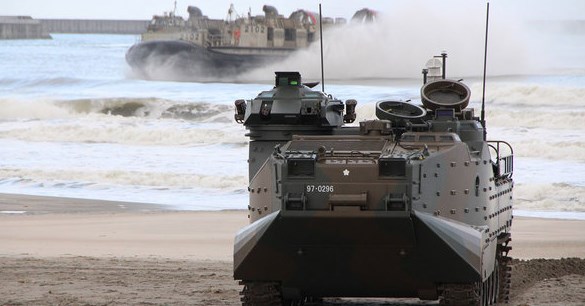
水陸両用車AAV7は、日本では離島防衛を目的として配備されている。
現行の中期防衛力整備計画によると、防衛省は、AAV7を2013年度予算から購入し、2016年度までに計47両分を確保、2018年度までに52両調達する予定を立てていた。
ただ、AAV7の試作機が米軍に配備されたのは、1970年代と古く、十分な水上速度が確保されていないのが現状である。
日本では、災害派遣でも活躍が期待されており、住民を孤立した島から救出する場合など、多様な活躍が期待されている。
東日本大震災の時、日本はまだ水陸両用車を持っていいなかったため、孤立した島の救出にアメリカの海兵隊が派出された。
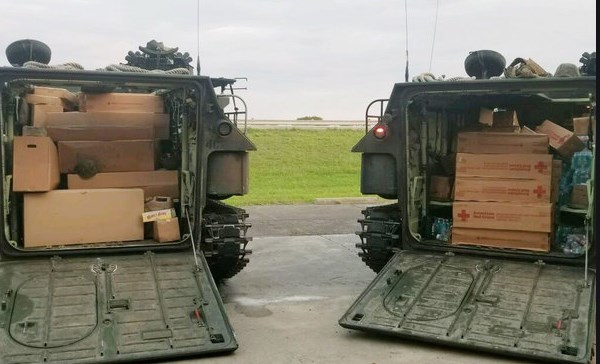
また、日本の離島が他国軍に占拠された場合などに、敵の攻撃に耐えつつ洋上から離島を目指す場合などに使用される。
水陸両用車ともなると、地上だけではなく、海で事故が起きた際にも救出することが可能なため、幅広い活躍が期待できる。
40mm自動擲弾銃Mk.19(40㎜じどうてきだんじゅうマーク19)であるが、40㎜グレネードを毎分250~350発発射可能で、最大射程は2200m程度、有効射程は1600mほどになる。
もう1つは、12.7mm重機関銃M2(エムツー)を装備しており、発射速度は毎分400~600発、有効射程は対地で約1000m、対空で約700mとなっている。
どちらも軽車両や地上兵士に対しては有効であるが射程が短いため、ある程度の装甲を備えている車両に対しては、有効な攻撃を与えることはできない。
またAAV7の装甲は10式戦車と違いアルミのため、防御力においては脆弱(ぜいじゃく)な部分がある。
では、水陸両用車AAV7を運用する部隊である水陸起動団とはどういう部隊なのか見ていこう。
陸上自衛隊の水陸機動団とは?
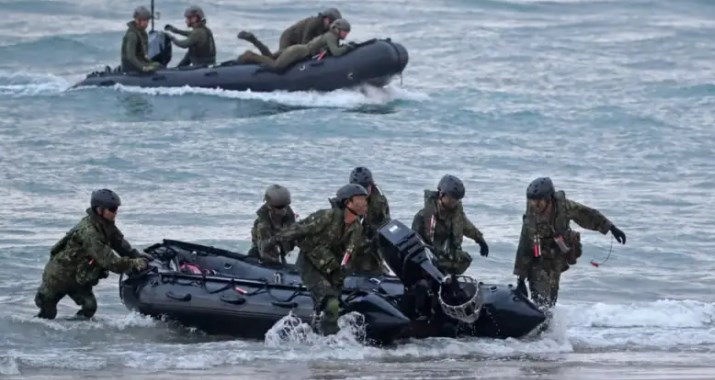
陸上自衛隊の水陸機動団とは、長崎県佐世保市の相浦駐屯地に本部が置かれており、2018年3月27日に創設、日本の陸上自衛隊に新編された部隊である。
中国の東シナ海の進出や南西諸島への領海への侵入などが繰り返され、この脅威に対応すべく水陸機動団は、日本の領海を守るために編成され離島防衛を重点に置いた部隊である。
水陸機動団では、1.団体部等 、2.水陸機動部隊、3.戦闘上陸部隊、4.その他の支援部隊の4つの組織に分類される。
水陸機動団全体では、現在のところ約3000名が所属しており、そのうち20名ほどの女性隊員も日々厳しい訓練は行っている。
6~8人で約200キロのボートを担ぐ訓練や、ヘリコプターからボートとともに飛び降りて上陸する訓練も行われる。
また、米海兵隊と合同で訓練するときは米軍オスプレイにより上陸する訓練、市街地戦闘などの訓練も行われる。
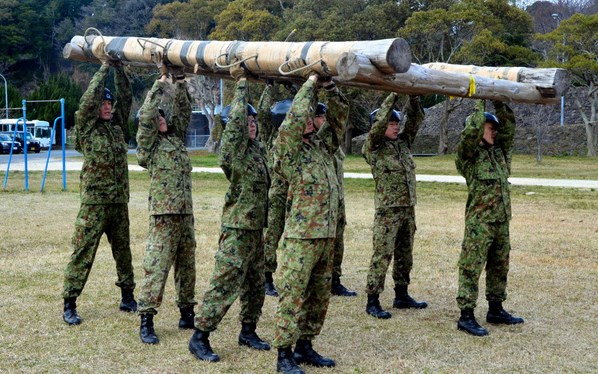
緊急事態に備えて、ヘリコプターが墜落したことを想定した水中での脱出訓練では、漏れ出したガソリンが目に入らないように目を閉じた状態で脱出しなければならない。
上下左右が分からない状態で緊急脱出しなければならず、恐怖心に打ち勝つ冷静さが必要となってくる。
AAV7が転覆した場合についても、脱出訓練が行われ、同様に目を閉じた状態で車両から全員が脱出するという、まさに命がけの訓練も行われる。
水陸機動団に入るにはまず、陸上自衛隊に入ること、そして自衛隊候補生や一般曹候補生として採用してもらうことが、何より先になる。
そして、自衛隊内で行われる適性検査を受けたのち、入隊後の訓練や任務は、とても過酷であるため、簡単な道のりではない。
水陸機動団の隊員たちは、何より過酷な訓練に耐えれる体力と、どんな事でも決して諦めない強い意志をもっている超人たちなのだ。
水陸両用車AAV7 まとめ

ここまで水陸両用車AAV7や陸上自衛隊の、水陸機動団について解説したきた。
水陸両用車AAV7は、実は実用化されてから既に40年近く経っており、老朽化している。
米海兵隊では、AAV7に変わる次世代水陸両用車を決定しておりACVになる。
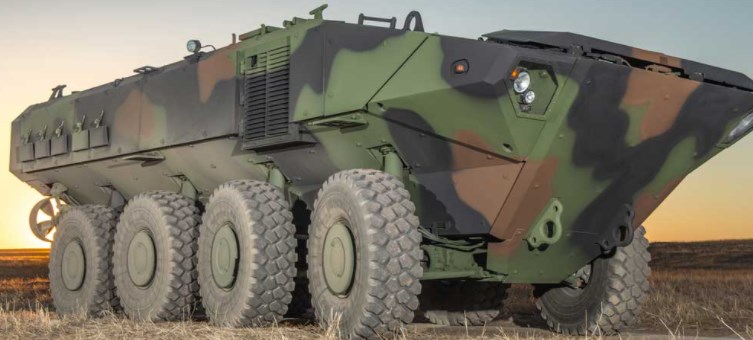
ACVは水上速度は遅くなった代わりに、AAV7よりも武装が強化され、防衛力が強化されているが、これができたのもAAV7あってこそではないだろうか。
日本でも採用されてから、自衛隊での救出活動に活用されたりと、活躍の幅が広がっている。
中国の海洋進出が年々激しくなっており、尖閣諸島を含む南西諸島海域への侵入も日常茶飯事になってきている。
もし、尖閣諸島が占領された場合に備え、水陸機動団は日々厳しい訓練に耐え、日本の平和維持のために命をかけた任務を担っている。
AAV7
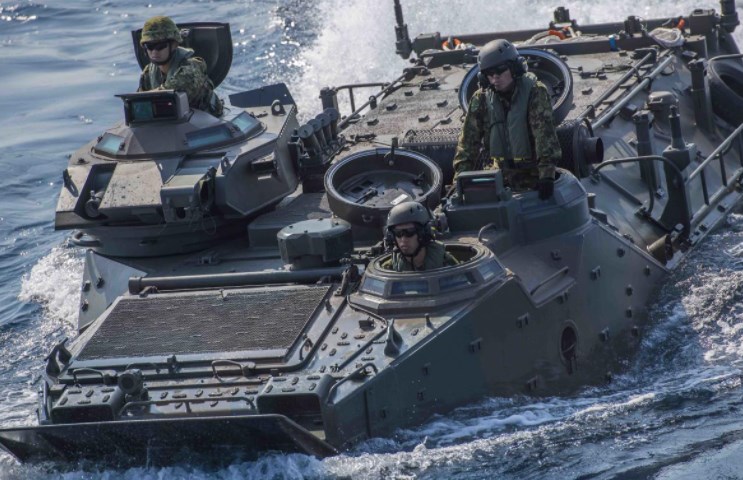
The AAV7 is an amphibious vehicle deployed by the Ground Self-Defense Force.
AAV stands for “Amphibious Assault Vehicle,” and as the name implies, it is an amphibious vehicle with combat capabilities that can float and navigate not only on the ground, but also on rivers, lakes, oceans, and other bodies of water.
The Ground Self-Defense Force deploys the AAV7 mainly to the Amphibious Task Force, and its missions are divided into three types: personnel transport, command and communications, and recovery.
The main purpose of these vehicles is to carry out landing operations to retake the Senkaku Islands and other islands when they are occupied.
In this article, I will explain the specifications of the Japanese Ground Self-Defense Force’s AAV7 armored personnel carrier, its mission, and the amphibious task force.
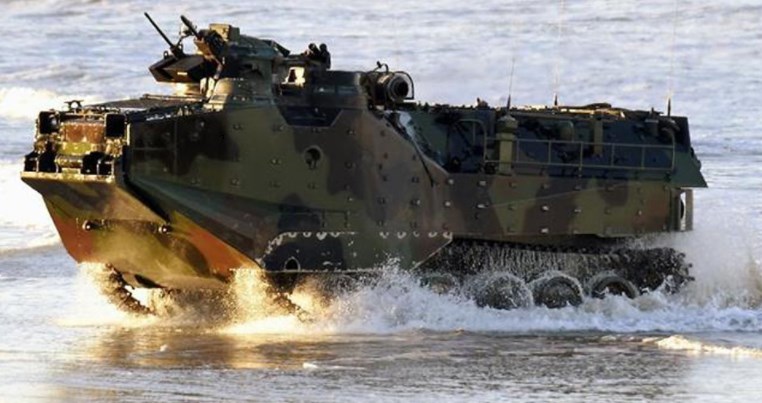
The Amphibious AAV7 is an armored troop transport vehicle developed in the United States.
Within the Ground Self-Defense Force, the newly established Amphibious Task Force began procurement in 2013, and a total of 58 units are currently being procured including ones for testing.
In addition, since they run on land and water, they require a large special license and a marine license.
Another difference between the training of the Ground Self-Defense Force and that of the general public is the swimming training.
In the U.S., more than 1,300 units, including derivatives, have been deployed to the U.S. Marine Corps since 1971.
The specs of the AAV7 look like this.
In addition to the three AAV7 pilots, the crew can carry a landing party of 25 people, and it can carry up to 4.5 tons of cargo.
It can reach a speed of up to 72 km/h on land and 13 km/h on water.
In the United States, it is nicknamed Amtrak, and its propulsion on the water is mainly through water jet propulsion.
The engine is a V8, 2-stroke, liquid-cooled, turbocharged diesel engine with a range of 483 km on the ground and 72 km on the water.
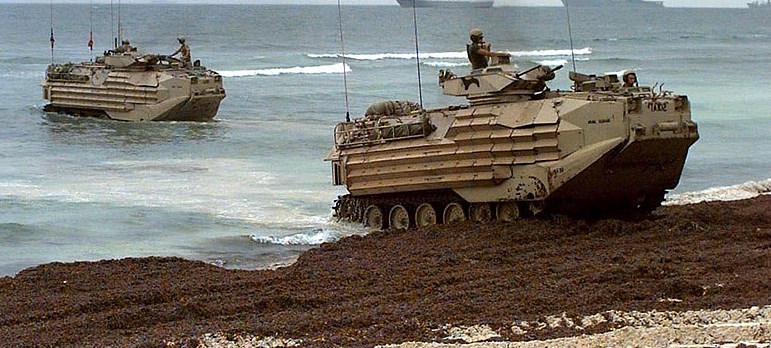
The AAV7 amphibious vehicles are deployed in Japan for the purpose of defending remote islands.
According to the current Mid-term Defense Force Development Plan, the Ministry of Defense had planned to purchase the AAV7 from the FY2013 budget, securing a total of 47 vehicles by FY2016, and procuring 52 vehicles by FY2018.
However, the prototype of the AAV7 was deployed by the U.S. military as long ago as the 1970s, and the current situation is that it does not have sufficient water speed.
In Japan, the AAV7 is expected to play an active role in disaster relief, and is expected to play a variety of roles such as rescuing residents from isolated islands.
At the time of the Great East Japan Earthquake, Japan did not yet have amphibious vehicles, so the U.S. Marines were deployed to rescue isolated islands.
The amphibious vehicles are also used in the event that a remote Japanese island is occupied by another country’s military forces, and they are used to reach the island from the ocean while withstanding enemy attacks.
As an amphibious vehicle, it can be used not only on the ground but also to rescue people in case of accidents at sea, so a wide range of activities can be expected.
The 40mm automatic grenade gun Mk.19 (40mm Jidouken Mark 19), which can fire 250-350 rounds of 40mm grenades per minute, has a maximum range of about 2200 meters and an effective range of about 1600 meters.
The other is equipped with the M2 (M2), a 12.7mm heavy machine gun with a firing rate of 400-600 rounds per minute and an effective range of about 1000m on the ground and 700m in the air.
Both of these weapons are effective against light vehicles and ground troops, but due to their short range, they are unable to deliver effective attacks against vehicles with a certain amount of armor.
Also, unlike the Type 10 tank, the armor of the AAV7 is aluminum, making it vulnerable in terms of defensive capabilities.
Now, let’s take a look at the Amphibious Task Force, the unit that operates the AAV7.
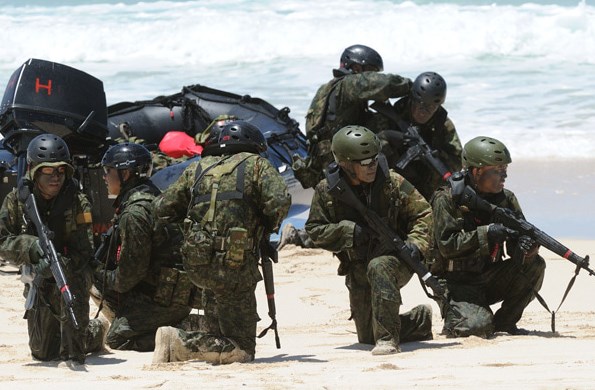
The Japan Ground Self-Defense Force’s Amphibious Task Force, headquartered at the Camp Ainoura in Sasebo City, Nagasaki Prefecture, was established on March 27, 2018, and is a newly formed unit of Japan’s Ground Self-Defense Force.
In response to China’s repeated incursions into the East China Sea and the territorial waters of the Southwest Islands, the Amphibious Task Force was formed to protect Japan’s territorial waters and focus on the defense of remote islands.
The Amphibious Task Force is classified into four organizations: 1) Organization Department, 2) Waterborne Task Force, 3) Combat Landing Force, and 4) Other Support Forces.
The Amphibious Task Force as a whole currently has about 3,000 members, including about 20 female members who also undergo rigorous training on a daily basis.
There are also drills where six to eight people carry a boat weighing about 200 kilograms, or jump out of a helicopter with the boat and land.
When training jointly with the U.S. Marine Corps, they also practice landing with U.S. Ospreys and urban combat.
In the underwater escape drills for emergency situations, they have to escape with their eyes closed to prevent gasoline from leaking into their eyes.
You have to be able to see up, down, left, and right, and you have to be calm enough to overcome your fear.
In the case of an overturned AAV7, an escape drill is also conducted, where everyone must escape from the vehicle with their eyes closed, a truly life-threatening exercise.
In order to join the Amphibious Task Force, one must first join the Ground Self-Defense Force, and then be hired as a Self-Defense Force candidate or a general sergeant candidate.
After taking an aptitude test within the Self-Defense Force, the training and duties after joining are very tough, so it is not an easy road.
The members of the Amphibious Task Force are supermen who have the physical strength to endure the toughest training and the strong will to never give up no matter what.
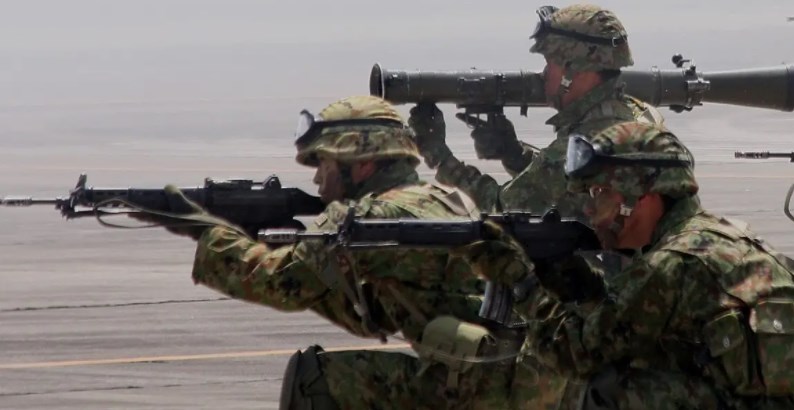
So far, I have explained about the AAV7 amphibious vehicle and the Japan Ground Self-Defense Force’s Amphibious Task Force.
The AAV7 amphibious vehicle has already been in use for almost 40 years and is aging.
The U.S. Marine Corps has decided on the next generation amphibious vehicle to replace the AAV7, which will be the ACV.
The ACV is slower on the water, but better armed and more defensible than the AAV7, but this was only possible because of the AAV7.
Since its adoption in Japan, the AAV7 has been used by the Self-Defense Forces for rescue operations and other activities.
China’s maritime expansion is becoming more and more violent every year, and intrusions into the waters of the Southwest Islands, including the Senkaku Islands, are becoming a daily occurrence.
In preparation for the possible occupation of the Senkaku Islands, the Amphibious Task Force endures rigorous training on a daily basis, risking their lives in the mission to maintain peace in Japan.
Amazonのオーディオブック12万タイトルの本を好きなだけお楽しみいただけます。・本の1冊分の月額で聴き放題
・料金をメリットが上回る
・いつでも読書できる
・読書量が格段に増え、積読が解消される
・長時間の読書も目が疲れない
・聴くたびに学びを感じる




